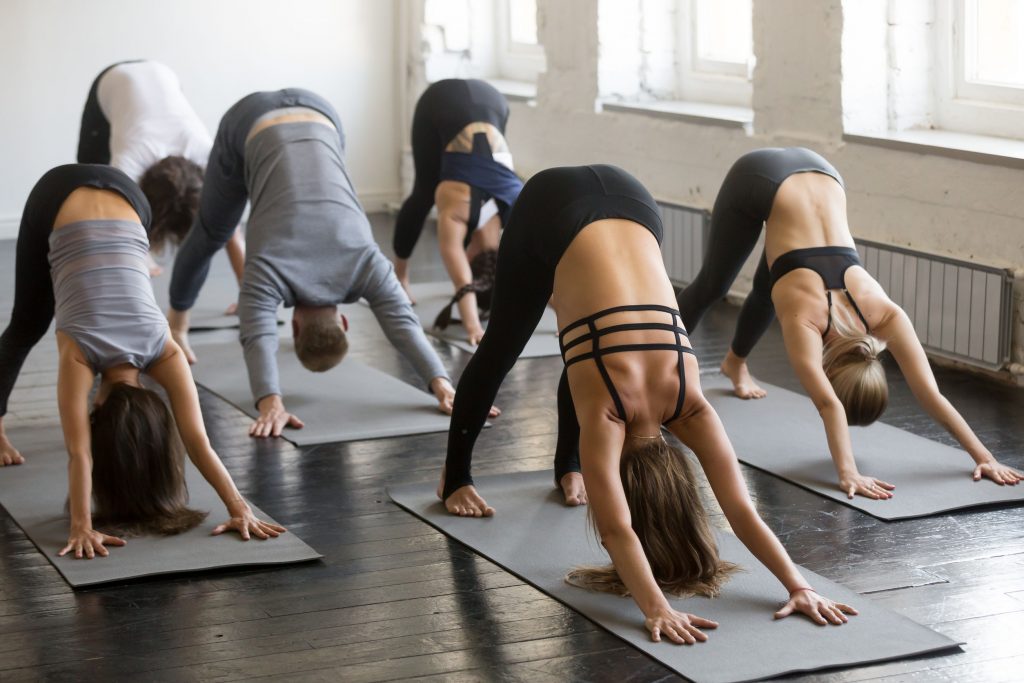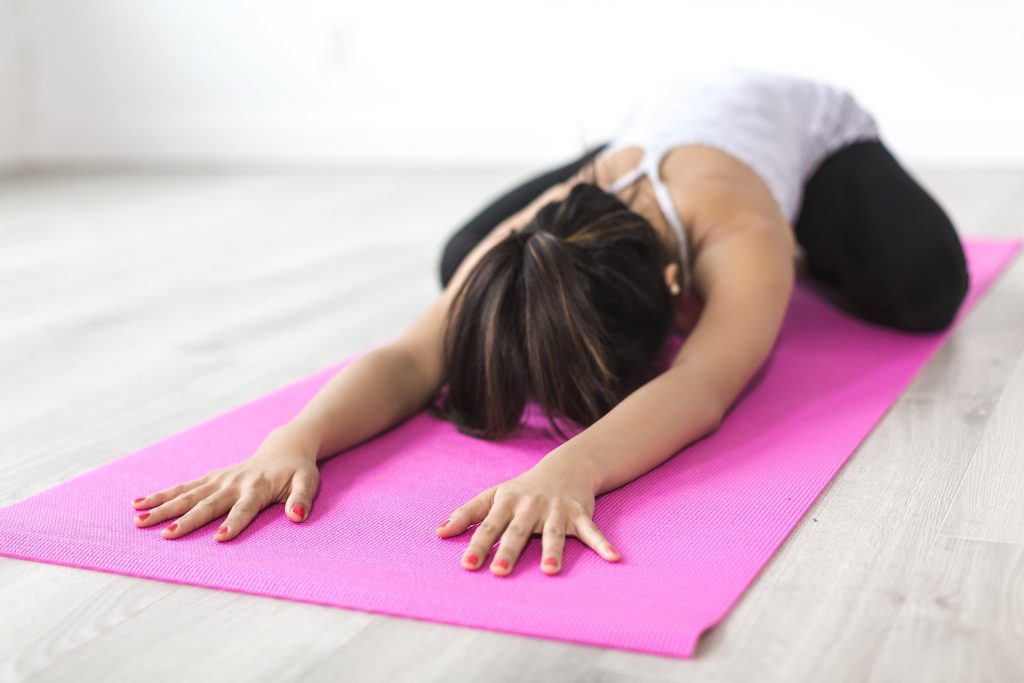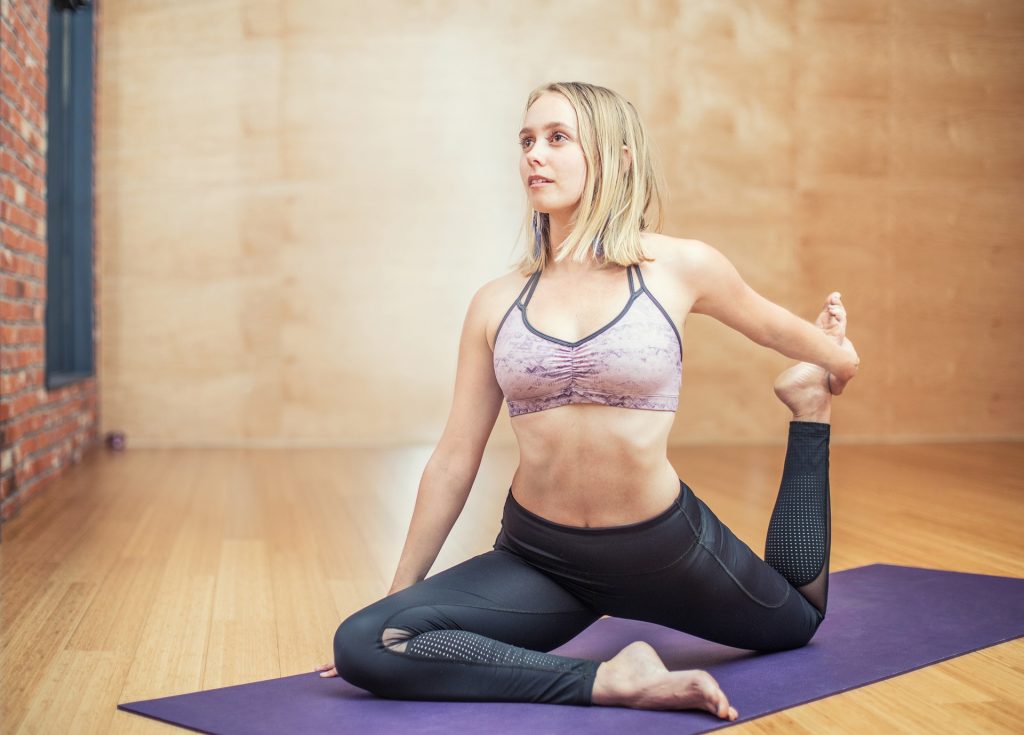Pilates vs’ Yoga – What is the difference?
And given they both improve core strength & flexibility….does it even matter anyway?
It’s a common conundrum: you want to improve your strength and fitness, or start a new form of mindful exercise but you don’t know where to start. What really is the difference between yoga and Pilates? And… does it even matter anyway?
Each person’s goal is different. You may want to gain fitness and flexibility, rehab an old injury or build core strength. What exercise should you being doing to achieve your goal?
Background/History
Yoga and Pilates come from very different backgrounds. Pilates was developed by Joseph Pilates and became popular in the 1920s after he migrated to America from Germany. Joseph developed the early stages of Pilates during WWII, while working as an orderly in a hospital. He wanted to help patients with their rehabilitation so he started attaching springs to hospital beds to help support patients limbs – this gave Joseph the idea of the Pilates Reformer bed, which are widely used in classes today.
After moving to America, Joseph Pilates set up his first “body-conditioning studio” in New York. It was located right next to the New York Ballet and it wasn’t long before the studio (and his method of exercise) became popular with dancers who found it helped them to improve their technique, recover from injuries and prevent reoccurring injuries. It didn’t take long before the popularity of Pilates grew and became well-known around the world.
Yoga, on the other hand, was developed by the Indus-Sarasvati civilization in Northern India over 5,000 years ago. The word yoga was first mentioned in the oldest sacred texts, the Rig Veda. Around the 5th Century CE, yoga became a more established set of spiritual practices and core beliefs among Hindus, Buddhists and Jains.
It wasn’t until the 1890’s that yoga became popular in the West. This was largely due to a Hindu monk named Swami Vivekananda who toured Europe and America around that time, and he shared the Yoga Sutras text. Since then, the popularity of yoga has sky rocketed, gaining momentum as a physical practice to improve health and fitness. The benefits of yoga go beyond just improving physical health, as it also improves your mental and spiritual health.
Despite coming from very different backgrounds, yoga and Pilates are both known to improve flexibility, increase muscle strength and tone – particularly in the trunk and core – and can help reduce back pain when these factors play a contributing role in pain. Pilates is great if you want to improve posture through dynamic stability and strength of the spine and equipment based Pilates is great as a tool for safe rehabilitation because it can be easily scaled to meet even very low movement capabilities and has a low impact on the joints.




Yoga is also associated with improvements in posture and spinal health. While there are many different styles of yoga, each class incorporates pranayama (breathing), relaxation and meditation, as well as exercising every part of the body. The isometric style of practicing yoga involves holding muscle tension for varying periods of time, improving cardiovascular health and improving circulation. This movement and muscle contraction can also help to speed up sluggish digestion, easing the digestive system. Yoga, when practiced appropriately, safely stretches muscles and joints, while strengthening the body. Yoga is also associated with soothing the nervous system, reducing stress, anxiety and fatigue, improving concentration, boosting energy levels and increased feelings of calmness and well-being.
It is said that the purpose of Yoga is to unite the mind, body and spirit. Teachers of Yoga see the mind and body as one whole structure and if the techniques are used in the proper environment, Yoga can be a way to heal the body and help to find mental harmony. This is why Yoga is traditionally considered to be a therapeutic activity. It gives your body more flexibility and promotes relaxation. The effect is has reducing stress is the most common reason people begin taking Yoga classes.
In Yoga, several movements are performed on an exercise mat and the weight of the body is used as a resistance for the exercise. This takes a great amount of focus and the flow in and out of each position is fluid. The movements are not what you would call high intensity workout moves; but they do require strength and control and can be challenging even for the strong, fit and able.
Pilates has many of the same goals in mind but the major difference between Pilates and Yoga is that in addition to mat work, there can be different exercise machines involved. Pilates works out the entire body in addition to the mind. The focus is on the core of the body so the rest can freely move and this makes your body stronger both inside and out. The balance is meant to be present between flexibility and strength and this results in stronger and leaner muscles. Many people see the value in both activities and this is why a whole new generation is choosing to incorporate both Yoga and Pilates into their lives.
Pilates is often thought of as being all about improving core strength and stability, the lack of which may contribute to some back problems. This is a pretty narrow view of Pilates though because, much like yoga, it is typically designed to give a whole body workout that promotes, strength, flexibility, coordination and control.
Pilates strengthens the small, stabilising muscles that hold the joints together (all joints, not just the back and pelvis) which can be great if you’re recovering from a joint injury or are looking to prevent one. The real beauty of Pilates lies in the systematic approach that Joseph Pilates took in creating exercises that gradually progress and regress the challenge on each area of the body. This means that Pilates can be very easily adapted to suit the needs and capabilities of the individual. Much of the equipment traditionally used in Pilates can be used as either a support for making the exercise easier or resistance for making the exercise harder.
This adaptability has made Pilates a real mainstay of therapeutic approaches to movement, and as a result, Pilates has been used for decades by physiotherapists, osteopaths and exercise physiologists to assist in injury recovery and rehabilitation. In more recent times it has also been adapted for use in competitive and high performance settings to improve movement efficiency and prevent injury. It’s become a fairly regular feature at elite sporting clubs.
So which one should you choose?
In all honesty, the answer is often either but generally speaking, yoga is much more about flexibility and mindfulness and Pilates is more about strength and stability. Pilates is often thought to be the safer option for people with or prone to injury but either practice can be adapted well enough for clinical populations by the right instructor. The critical point of difference here is that most Pilates courses have some rehabilitation component built in and most yoga teaching sees this as an add-on skill for those interested in furthering their teaching.
From a body and mind connectedness perspective -Yoga uses the body to connect with the mind and the inner self, while Pilates uses mindfulness to connect to the inner workings of the body.
From a physical perspective, many of the actual movement and poses are similar – But in Pilates, you tend to build up to certain moves and postures more slowly than you might typically in yoga. In yoga the basic idea is that if you keep performing and practicing a poses, your body will eventually adapt and allow you to do it well. In Pilates we would typically map out a number of transition exercises that build you toward the final movement or posture to get you there most comfortably and ensure you’re as efficient as possible in the final posture.
All in all – the end result is often the same. Do something, do it consistently, and gradually increase the challenge and your body will respond by increasing what you are capable of. That applies to both the mental and the physical. Yoga and Pilates have slightly different approaches but both have incredible benefits for both the body and mind. If you’re still not sure which one to start, why not give both a go and see what suits you best. See which you enjoy most.
If you have an illness or injury, please consult with your doctor or allied health professional before you start a yoga or Pilates class as some of the poses may be inappropriate for you if you have had surgery or suffer from any particular illness.
To find out what type of exercise is best for you, book an initial consultation with our Accredited Exercise Physiologist Marissa Hoey.
